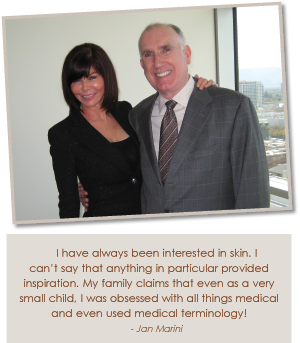1. Expect Lifelong Customers. Your product may solve a problem they have, but think about how their complete satisfaction will bring them back to you to solve other problems (or the same problem on many other body parts.) Don’t wait for customers to prove their loyalty. Instead, approach everyone as a potential lifelong partner. If they are treated that way, they might act that way from the beginning.
2. Offer What Others Don’t/Can’t. Once the basic services are working, exceed the expectations by adding new complimentary service or product options and add-ons. Professionals have to be open to using new products and offering customers new concepts. They must also be willing to invest time and money in them. This will give you an edge over your competitors (including OTC products/treatments) and position your salon or spa as an industry leader and trendsetter.
3. Focus on Making Customers, Not Making Sales. Salespeople, especially those who get paid on commission, sometimes focus on the volume instead of the quality of the sale. Remember that keeping a customer's business is more important than closing a sale. Research shows that it costs six times more to attract a new customer than it does to keep an existing one.
4. Ask for Their Opinions. Keep your clients a part of the process, whether it’s on new product introductions or marketing materials. Survey your clients on their satisfaction and be sure to acknowledge their responses and reward them for their help. Tailor your services and approach to your clients’ specific needs and buying habits. Get them talking about their lifestyle and their favourite products to find out more about them.
5. Build a Loyal Team. Not only will you maintain a consistent staff and cut back on time and costs of training leaving more time for customer service, but you are also treating employees the way you want them to treat customers. Loyalty breeds loyalty.
6. Make Them Want to Come Back. Create ways to lure customers back, whether it’s packaging of services and prescheduling bookings or new product or service introductions, marketing events, networking functions, etc.
7. Be Picky About your Lifelong Customers – Know which ones to invest in by monitoring what goes into keeping a customer satisfied. Find your target market and focus on that group. It’s a myth to say that everyone should be a lifelong customer.
8. Do Not Discriminate. While you want to focus on your target market for lifelong customers, you do not want to exclude business from anyone. Search for treatments that are universal and don’t exclude clientele (based on hair or skin color, for example.) Not only will this help you build a broad client base but it will also allow for a wide referral business as well.
9. Deliver On Your Promises. Too many businesses focus on ways to keep customers only to lose sight that their product or service simply isn’t as good as it should be. Make certain that you are only providing top, cutting edge products and services deserving of long-term loyalty.
10. Be a True Expert. Have deep technical and practical knowledge about the treatments you are providing. Professionals are facing more and more complex treatment methods that need to be fully understood and mastered. Providing true value in service and knowledge to your clients will help you battle the do it yourselfers and the growing over the counter segment.
11. Communicate Frequently with Your Customers. Whether it’s a newsletter, client entertainment event or thank you note offering a follow-up tip or special offer, make sure your client hears from you frequently and learns about your new services via many different vehicles. Be sure to share your successes with your clients, such as displaying reprints of advertising and editorial coverage in your offices.
12. Be Flexible. Try to solve customer problems or complaints. Don’t let overly rigid procedures and policies get in the way of making and keeping loyal customers.
13. Make it Easy to Buy. The buying experience in your salon or spa, on your website or through your catalog should be simple and easy. Eliminate unnecessary paperwork and forms, help people find what they need, explain how products or services work, and do whatever you can to facilitate transactions.
So now you built a base of customers for life. What next? Here are some additional tips for expanding your business exponentially by turning loyal customers into loyal referral business:
1. Know what Motivates them to Refer You – It is simple: It makes them look and feel good. They want to pass on a hot new product, a new find, a great experience because it, in part, makes them look and feel smart, counted on, savvy and more. Tap into their motivation and acknowledge it.
2. Create Incentives – Create promotions that encourage referrals. Make it fun for your clients and also make sure they get something in return for their building your business. Perhaps offer discounted offers such as “bring a friend, and get your service for half price.”
3. Keep the Message Simple and Consistent - From my experience helping salons throughout Europe introduce a brand new type of product to thousands of customers, for each happy customer, the spa or salon obtained at least three new clients. We believe that these referrals were attained not only because of the convincing results and happy client testimonials, but also due to the simple sales pitch delivered by a well-trained staff touting the product benefits and results. Make sure that your marketing materials, your waiting room communications and your staff all speak to the referral point of view.
4. Change How you Think of Referrals. Your referring clients are not really doing you a favor. You are actually helping them just as much. If you have your clients’ best interests at heart you are doing them a disservice if you don't also systematically extend your care to their friends and family.
5. Set the Referral Expectation Up Front. If you know that your practice provides an exceptional experience, then make referrals part of the deal. Don't wait and come back asking on the second or third visit. Instead, make it an expectation up front. When a new client comes to your practice, simply explain that you work primarily by referral and that you know they will be so thrilled with their new service that they should bring with them three referrals on their next visit.
6. Be Easy to Refer. Make the process easy on your clients by giving clients a “proposed letter of referral” that they can simply copy on their own letterhead or send from their own email. Or at the end of each visit, hand them a self addressed stamped postcard for them to return to you with four names and phone numbers. Try providing them with a supply of product samples, pens or other products with your company logo, etc.
7. Get Testimonials and Photograph Results – What better way to tell your success stories on marketing materials for referrals than to show your great results with before and after photos? If you must use words, let your clients sing your praises through written testimonials, so you don’t have to.
8. Do Something Exceptional. Add something to your practice that makes people talk about you. I once read about a dentist that baked cookies in the office and gave them out as patients left. Great smells in a dentist office! This type of strategy takes some creativity, and some nerve, but it could become a primary marketing tool to stand out from the crowd…life is too short to work with anyone else.
Peter Lassen is the Sales and Marketing Director of Epilar USA, makers of The Epilar® System, a first of its kind in the hair reduction category now available in U.S. spas and salons to significantly reduce unwanted hair. Lassen joined Cosmeceuticals (UK) Ltd. - the international division of CosMedical Copenhagen - in January 2001 and has been instrumental in the launch of the Epilar® System and other cosmetic products worldwide. Lassen is responsible for building the Epilar System’s distribution and sales to top spas, salons and beauty boutiques throughout Scandinavia, Germany, Italy, Poland, Portugal, Spain and France. Currently more than 2,000 salons and spas carry the product and nearly 70,000 applications have been provided to European customers. Lassen is now focused on launching and building The Epilar System’s U.S. distribution and sales, especially in key markets including Los Angeles, San Francisco, New York, Miami and Dallas among others. Hair removal is estimated to be over a $2 billion dollar business in the U.S. (according to a Mintel Consumer Intelligence Report). For further information please visit www.epilar.net or call 1-877 888 2211.





 Those who know Jan Marini refer to her as a visionary. While Jan might agree in principle, she sees this characterization as both a strength and a weakness. She envies those who are able to savor the moment. Where others view life in snapshots that capture real time, Jan sees broad borderless landscapes and endless possibilities. She does not see a product, she sees a business and in that same instance her mind is flooded with the business plan and all the accompanying details. Even when she is not envisioning empires, she is never satisfied with the status quo.
Those who know Jan Marini refer to her as a visionary. While Jan might agree in principle, she sees this characterization as both a strength and a weakness. She envies those who are able to savor the moment. Where others view life in snapshots that capture real time, Jan sees broad borderless landscapes and endless possibilities. She does not see a product, she sees a business and in that same instance her mind is flooded with the business plan and all the accompanying details. Even when she is not envisioning empires, she is never satisfied with the status quo.